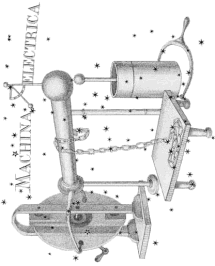Monday, December 8, 2014
Monday, May 12, 2014
Sunday, January 5, 2014
The year in review and Propulsion Physics
Wishing everyone all the best for 2014, clear skies and smooth waters.
Finished all my studies in marine engineering (I did get my next Chief Engineer's licence) and I'm back into Physics. Thought it would be interesting to look at 2013 in hindsight and sum up where we are up to. To be clear here I am looking at alternatives to chemical rockets for propulsion purposes in getting hardware from ground to Low Earth Orbit. As previously noted, this is a make or break issue for long term manned deep space exploration including interstellar travel.
There are plenty of studies looking at the Physics in getting hardware light-years from Earth however few that look at how to get hardware 100Km or so into orbit without using chemical rockets. Most of the interstellar related propulsion studies I've seen don't have applications for at least 100 years, although interesting they demand a fusion or other high energy shipboard power plant or an extensive beamed power source. The solar sail solution is elegant however past Jupiter's orbit is somewhat less effective because of the diminished solar radiation intensity and the very large sail area looks very impractical. They also don't address how the starship will be built in the first place and presumably assume an extensive space based shipyard / infrastructure. To sum up all the current starship designs proposed for interstellar travel have major problems, are impractical for interstellar travel and the cost would be astronomical, although the physics is sound. So there's still a lot more work to be done in this area before man is ready to launch an interstellar starship to other star systems.
An alternative propulsion system to chemical rockets on the other hand is achievable within a more reasonable time frame (say 30 years). The space elevator is feasible although considerable progress in the fabrication of carbon nanotube fibres has to be achieved before this gets anywhere near to reality (apart from the large dollar investment).
Gravity Control Propulsion (GCP) would be another logical (more elegant) alternative however the underlying Physics of General Relativity (GR) still hasn't been worked out. Until this is understood the viability of GCP cannot be answered (although the basic requirements from GR have been established). The validity of the current alternative models to GR are not yet clear. Most of the models that I have looked at don't even attempt to come up with predictions that can be verified by experiment today. It is also not clear why some areas of research in Physics concentrate on finding a unified model of physics in quantum gravity as Nature has not made this a clear requirement.
Are there any other viable alternatives? Unfortunetly the other options such as electromagnetic catapult launches, tethered pendulums from orbit, external nuclear pulse propulsion etc are also problematic to say the least, again requiring either considerable infrastructure, radiation fallout, extremely high costs or payload launching capability is so small that we might as well continue to use chemical rockets which are at least affordable for small payloads until an elegant solution is found. We'll see what 2014 has to bring for Propulsion Physics.
CI.
There are plenty of studies looking at the Physics in getting hardware light-years from Earth however few that look at how to get hardware 100Km or so into orbit without using chemical rockets. Most of the interstellar related propulsion studies I've seen don't have applications for at least 100 years, although interesting they demand a fusion or other high energy shipboard power plant or an extensive beamed power source. The solar sail solution is elegant however past Jupiter's orbit is somewhat less effective because of the diminished solar radiation intensity and the very large sail area looks very impractical. They also don't address how the starship will be built in the first place and presumably assume an extensive space based shipyard / infrastructure. To sum up all the current starship designs proposed for interstellar travel have major problems, are impractical for interstellar travel and the cost would be astronomical, although the physics is sound. So there's still a lot more work to be done in this area before man is ready to launch an interstellar starship to other star systems.
An alternative propulsion system to chemical rockets on the other hand is achievable within a more reasonable time frame (say 30 years). The space elevator is feasible although considerable progress in the fabrication of carbon nanotube fibres has to be achieved before this gets anywhere near to reality (apart from the large dollar investment).
 |
| The space elevator concept. Image: Space Elevator Wiki |
 |
| A basic requirement for GCP: a flat spacetime metric within a curved gravity well. Image: CI |
CI.
 |
| Chemical rockets, the only means today to get into orbit. Image: NASA. |
Subscribe to:
Posts (Atom)














































